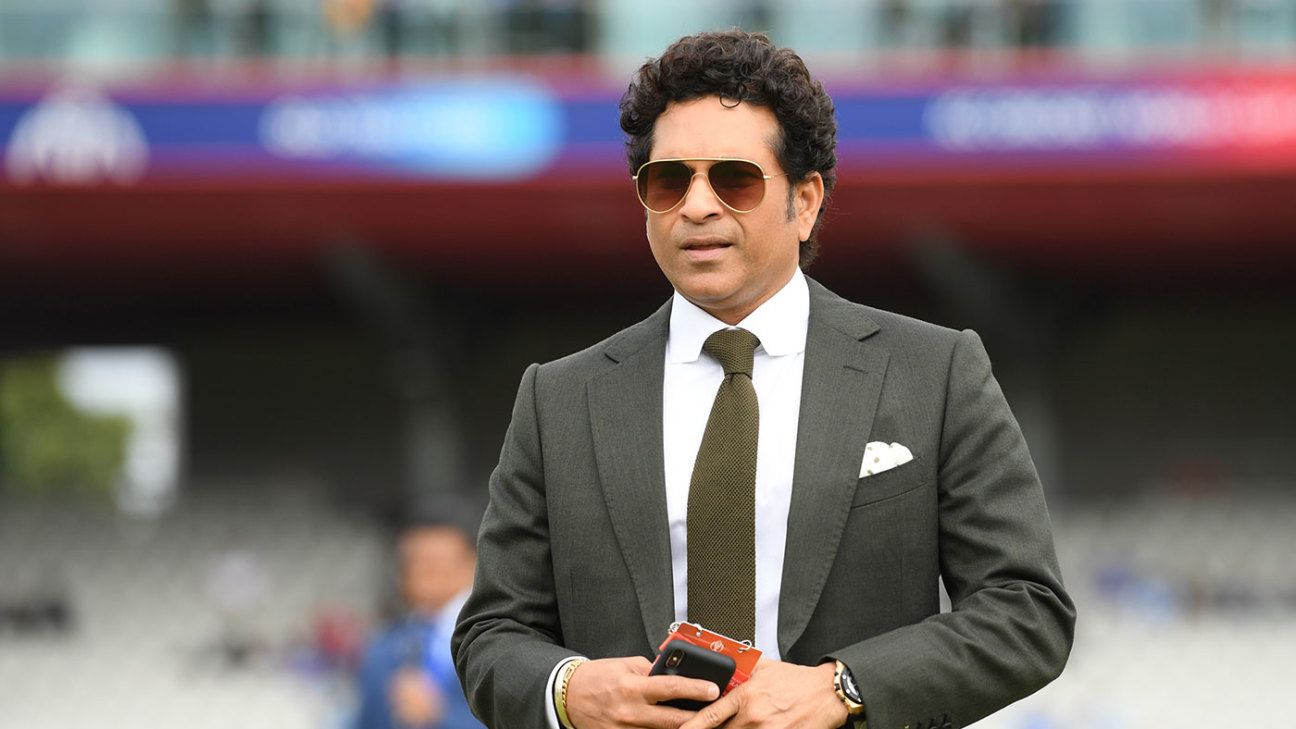
"I feel all three formats are completely different. Somewhere I do feel [that in the] one-day format, people need to have a look at it closely," Tendulkar said in an interaction with journalists ahead of his 50th birthday. "I feel there is an imbalance between the bat and the ball. It is too much in favour of the batters at this point.
"With two new balls, even in the 25th over, the ball is literally 12 or 13 overs old. There is no such thing as reverse swing or the discolouration of the ball, or the ball becoming soft. These factors really put a lot of pressure on the bowling side. There were challenges [for batters] where one did not pick the ball because of the discolouration. That was an advantage for a bowler.
"And with field restrictions, we need to balance that out. Give some advantage to the bowlers as well. I find that element missing in ODI cricket right now."
Tendulkar pointed out that with five fielders in the ring from overs 11 to 40, spinners were being forced to bowl defensive lines.
"Also with the introduction of five fielders in the ring… I was speaking to a lot of spinners and the overall opinion is that 'we cannot change our line'," he said. "If an offspinner is bowling, he is forced to bowl a middle-stump line. Because you either have to have your deep point in the ring or you need to bring in the long-off because on the on side, you have three fielders in the deep and here you can have only one fielder in the deep.
"So they cannot deceive a batter by getting him to play a cover drive. The overall opinion is that 'we have to kind of settle for a defensive line'. I would say that some adjustments need to be made."
"Once the ball gets wet - you are looking at literally the first six-seven overs and later on once the ball is wet - spinners do not get any purchase off the surface and neither are seamers able to swing the ball. If at all there's anything, it's off the seam for a while. It does not allow the bowling side to come back in the game"
Sachin Tendulkar
"The solution for that, I had spoken some time ago, is to have a 25-25 overs match," he said. "It is a 50-over match, but you bat for 25 overs, then the other team comes and bats for 25 overs, and you start again from where you stopped after the first 25 overs.
"The only reason I am trying to say this is because a small coin can decide the fate of the game. It is no more a competition between two sides. One side is favoured by conditions because the captain has won the toss. So it's not a fair competition between two sides.
"Once the ball gets wet - you are looking at literally the first six-seven overs and later on once the ball is wet, spinners do not get any purchase off the surface and neither are seamers able to swing the ball. If at all there's anything, it's off the seam for a while. It does not allow the bowling side to come back in the game.
"If we are able to divide these overs, and get both sides batting and bowling in dry and wet conditions. Of course, the one who wins the toss will have 10 or 15% advantage, but not 90%. Right now, it is 90% advantage, and that needs to be balanced out a bit."















 Phone: (800) 737. 6040
Phone: (800) 737. 6040 Fax: (800) 825 5558
Fax: (800) 825 5558 Website:
Website:  Email:
Email: 






